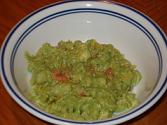OK, so I realize I may come across as a lush, but sue me, I’ve had a tough couple of weeks.
Recently, as I was enjoying one of my favorite types of cocktails, a margarita, I realized this is yet another one of life’s joys I have my neighbors to the South to thank for (well, tequila is the specific joy, the drink itself ... I explain that below).
Tequila, the main alcoholic component in margaritas is made from blue agave, a plant found in the desert regions of
My personal favorite out of all the sorted histories of the drink is the tale of a confused bartender. His story says that in 1942, a customer asked for a "Magnolia", but he (Francisco "Pancho" Morales) couldn't remember exactly how to make it, so he made something up, and named it "Daisy" instead, which translates to ‘Margarita’ in Spanish.
A classic recipe for margaritas is simply two parts tequila, one part cointreau (or triple sec/an orange liquor), two parts fresh lime juice and one part simple syrup (sugar water basically) In many restaurants and bars today, sweet and sour mix is substituted for lime juice and the simple syrup. They also usually offer numerous types of flavored margaritas for variety. One I’ve recently had the pleasure of tasting is called “The White House,” and served at a relatively new
